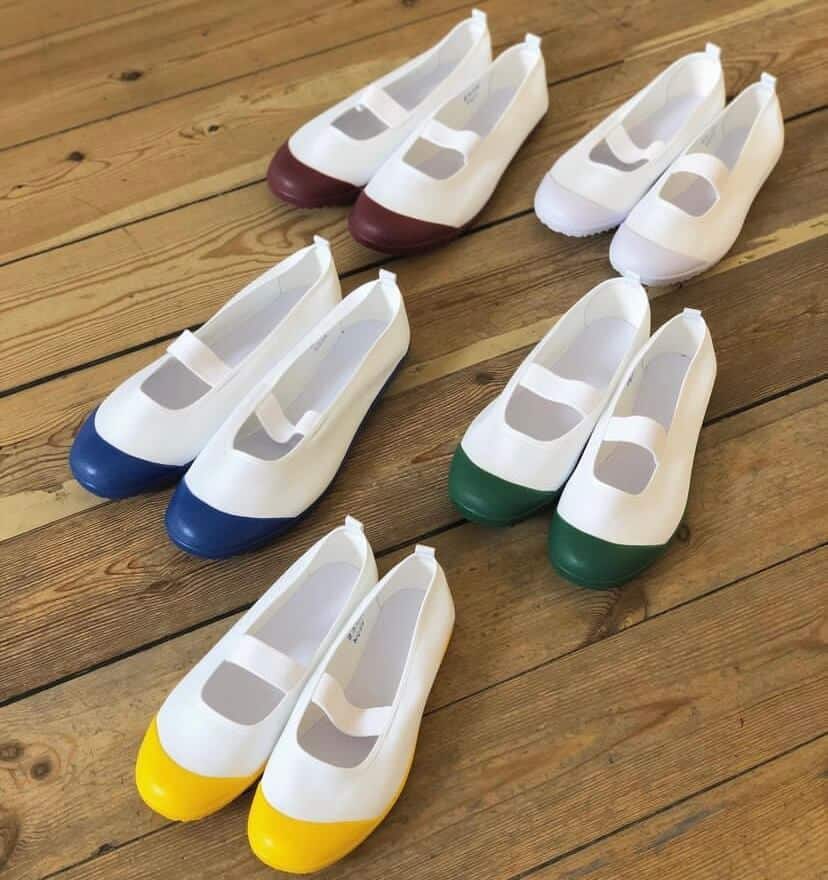Did you know that the Japanese have different types of traditional footwear. Here’s a list of types of traditional Japanese footwear.
There is so much to admire and respect about the traditional Japanese clothing: the colorful and exquisite kimono designs and yukata, the dignified hakam and more. But no look would be complete without the right pair of shoes and Japanese shoes are no different.
Aside from serving a functional purpose, Japanese traditional footwear also can be appreciated for their unique aesthetic qualities that are considerably different from anywhere around the globe.
Until the twentieth century, these types of footwear were worn exclusively in Japan for thousands of years. Nowadays, these classic shoes are still worn by citizens on special occasions, festivals and traditional events.

With so many different kinds of traditional Japanese footwear and sandals, we have selected the most common ones and their functions.
So, if you are looking for the best traditional footwear in Japan, here is everything you need to know:
Types Of Traditional Japanese Footwear
Origin Of Traditional Japanese Footwear:
Traditional Japanese footwear has historical roots from both Southeast Asia and Southern China. The very first design features a thong that comes from the front of the sole so that the foot slips into the thong easily and the big and second toe grip the shaft.
This kind of footwear was used during the humid climates making it very easy to put on and take off the sandals. Another kind of footwear comes from the Northern Korean peninsula and China which is like wearing a proper shoe.
Farmers in Japan during the Yayoi period wore tageta (ancestor of geta) dated more than 2000 years ago to protect their feet from sinking into the mud when transplanting the rice seedlings.
During the 6th century, metal-plated shoes of the ruling class were discovered following the similar design of the Korean peninsula and were not used for everyday use.
Later on these were worn at Shrino Shrines and Buddhist Temples. Leather and cloth shoes were popular during ancient times.
During the 8th century, straw shoes were introduced in China which later evolved into Waraji which was more suitable for the Japanese climate and custom of removing footwear before entering home.
- Related: Guide To Buying Tabi Socks
Types Of Japanese Traditional Footwear
Zori (草履)
Zori means straw shoes, which reflect its original materials. They are considered one of the most comfortable and popular Japanese shoes, and were often woven so that you can wear it like a slipper for home and made from leftover scraps of fabric.
The modern zori slippers are made from cotton polyester blend which is strong, flexible with a soft underfoot to provide padding for the sole.
When compared to geta, zoris are much softer because they are covered in leather, cloth or even vinyl.
They are usually worn on formal and special occasions along with elaborate kimono outfits, and worn with tabi socks.
They are made from a style called nuno zori which is also a popular Japanese footwear sandal. These are the best choice to wear indoors because of its comfort and sandal-like design.

Zoris helps keep the feet cool during summers and the soft fabric protects your feet from cold floors during winters.
- Related: What are Japanese tabi boots used for?
- Related: Guide to Japanese Tabi Work Boots
Geta (下駄):
Geta literally means ‘under footwear’ and is designed to elevate a person from the ground and protect your hem of the expensive kimono from getting ruined. They are carved from a single block of wood, with something called teeth as the most important part of the base.
Types of Geta:
- Tengu geta or the one tooth geta are depicted as tengu or demons wearing them hence its name. Today, they are worn by celebrities.
- Masa geta or geta with two stilts are the most common kind.
- There are also geta with one or three teeth, and ones with no teeth but a full base instead, they resemble platform shoes. In the past, three teeth geta were worn by the high-class Japanese courtesans called oiran.
Modern geta are closer to a high-heeled sandal in shape, and worn while wearing a kimono, or indeed any other outfit. Modern geta are much more comfortable, and are very easy to slip in and out of with no ties, laces or fasteners.

Keep in mind, the higher the teeth of the geta, the harder it is for you to keep balance so the lower types like 5 to 10 cm are very common. You can choose whether to wear a tabi or not.
Setta (雪駄):
This is a kind of zori which is typically worn mostly by men of zouri with the leather bottom directly attached to the top in a construction, which is called jikazuge.
It is made with steel nails pounded into the sole to hold all materials together, the top is woven with leather, bamboo, synthetics sewn into the bottom.

Originally it was known as sekida and was designed for tea master Sen no Rikyu to wear on his walks in his teahouse garden on snowy days.
Jikatabi (地下足袋)
Jikatabi literally means, ‘ground tabi socks,’ and were invented and became popular during the 1900s after they were modeled after tabi, so they are also called tabi boots usually worn by people who work outdoors like construction workers or rickshaw pullers.
They are sturdy with reinforced soles usually made from rubber or coarse fabric and are worn exactly like socks. They may not be considered traditional footwear but many men do wear them during matsuri festivals along with a happi jacket and fundoshi loincloth.

Nike even created its own model called Nike Rifts. They can be worn with kimonos as well, but better not for formal functions.
- Related: Where to buy Japanese Tabi Shoes?
Waraji (草鞋)
Waraji are traditional sandals that are woven from straw and were the basic everyday footwear of old Japan. The most traditional material is rice straw but it can be made with cotton, palm or hemp too.

The samurai and commoners used to wear these during the Edo period. In modern day, they are worn by Buddhist monks and on several festivals.
Okobo (おこぼ):
Okobo are a type of willow-wood geta and were worn traditionally by maiko
(apprentice geishas). Children wear this type of footwear during shichigosan festival with an impressive height of 15cm.

Other names include: Koppori, Pokkuri and Pokkuriko because the bell inside the sole makes a noise.
Related: Where to buy kimono in Japan
Suripa ( おこぼ)
It literally means to ‘slip on’ and gets its name from the fact it is easy to slip your feet into it. They are open at the bottom and do not have any knots or fasteners.
It was originally made during the Meiji period and was worn by foreigners who were not used to removing shoes outside homes.They are available in various designs and models.

They are placed inside homes to be used by visitors. You see, genkan is a Japanese tradition where you leave your footwear upon entering a home.
Uwabaki (上履き)
Originally, the word, ‘Uwabaki’ meant a generic name of shoes, put on inside of the building. But today, they are used inside the schools, gymnasiums and offices.

It is usually made in white color and made from PVC material. They are available in most shoe stores and home centers.
Traditional Footwears in Japanese: FAQs
Which is the best Japanese footwear you should wear with a Kimono?
The short answer is, anything. But it also depends on comfort and formality.For formal functions, it is common to wear a zori and setta and for more traditional occasions and take photos in kimono outfits, getas can be worn.
Do you wear socks with Japanese footwear?
Yes, socks can be worn which are called tabi, but again it depends on the occasion, personal choice and weather. They are usually paired with zori and geta on formal occasions. They are also worn during the cold weather because going barefoot during this time is not advisable. They are worn with a casual yukata outfit and in hotter weather.
What is the difference between flip flops and Japanese sandals?
Although they have been mistaken for each other quite often, they are quite different. Japanese sandals, especially zori, have taken inspiration from modern flip flops in the USA. Flip flops are considered more casual wear whereas Japanese sandals are worn on numerous formal occasions and festivals.
Conclusion:
Japanese people have much smaller feet than most Western people but don’t let this discourage you from buying your very own pair of traditional footwear. Zori and Geta are both popular choices to choose from.
But keep in mind wearing these footwears have incredible health benefits as well. For starters, they do not look so good but they help in foot development because of the proper posture of the foot maintained.
Believe it or not, many nurseries and preschools in Japan have introduced students to wearing zoris because they aid in improving foot development and help kids with a number of physical activities like running, jumping and walking.
Now that you have seen the various kinds of traditional footwear in Japan, please do not miss a visit to a local store and get one of the best Japanese shoe designs.
Also Read





